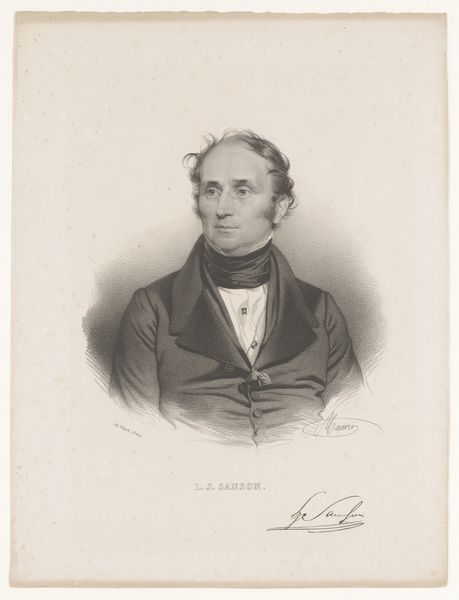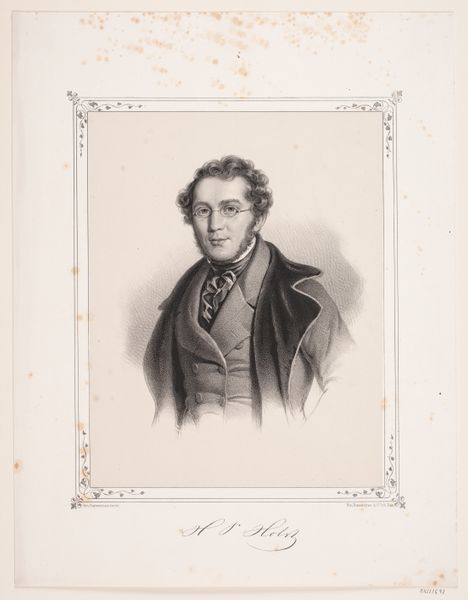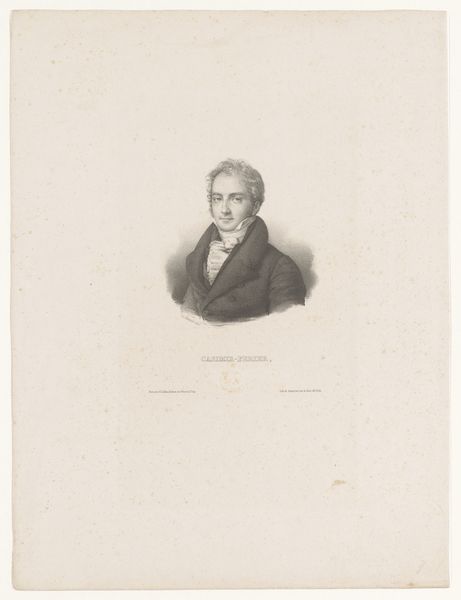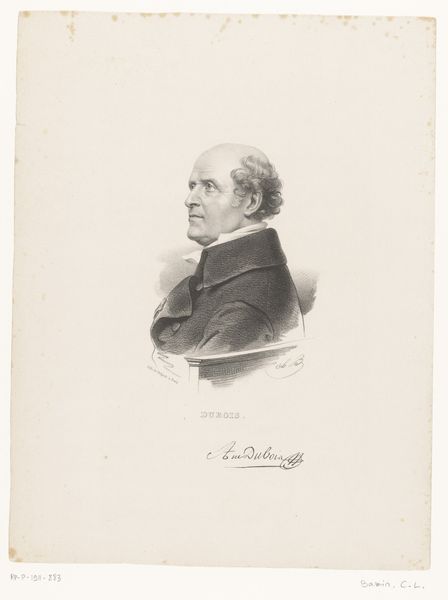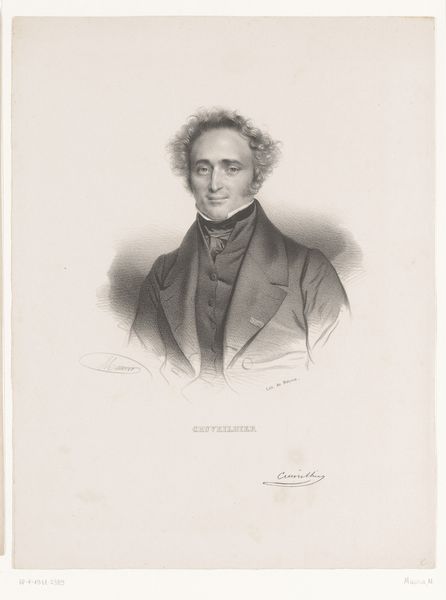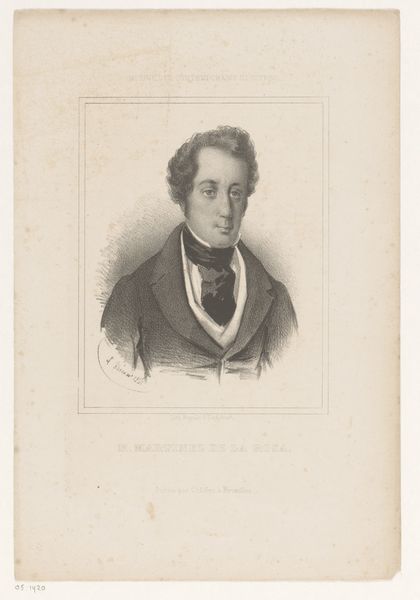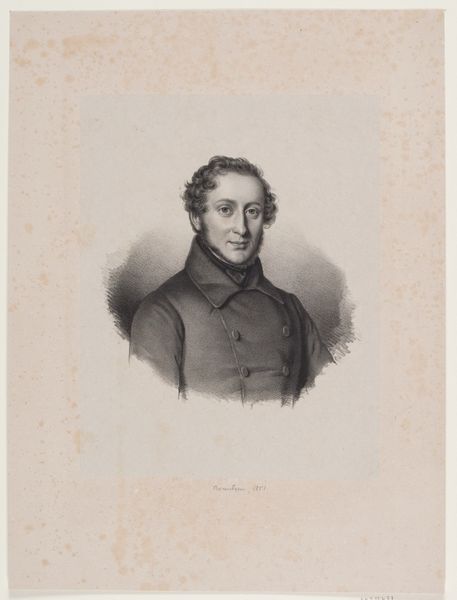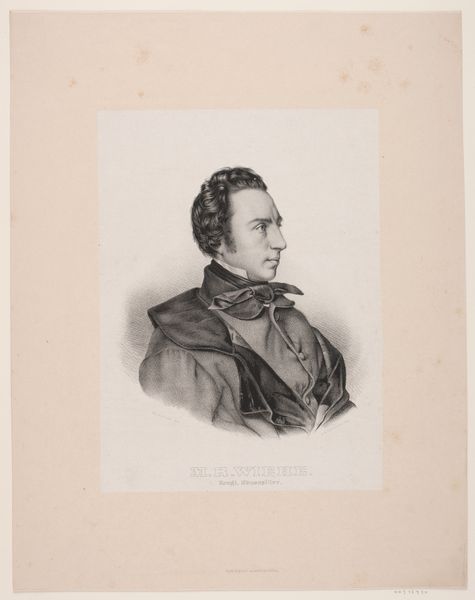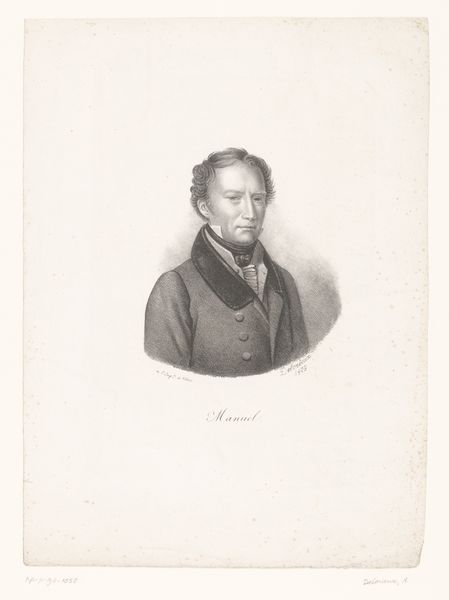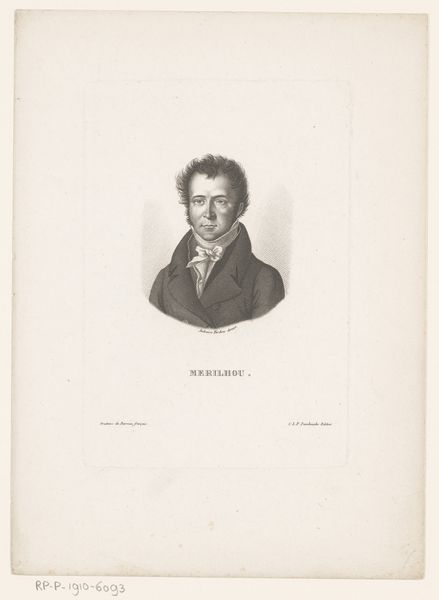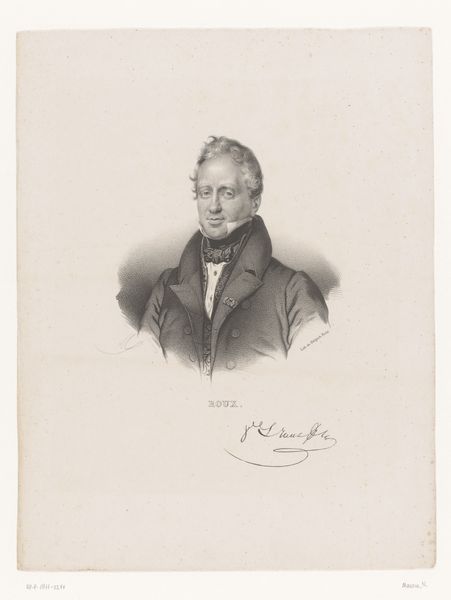
print, engraving
#
portrait
#
pencil drawn
#
neoclacissism
#
16_19th-century
# print
#
pencil sketch
#
pencil drawing
#
19th century
#
engraving
Dimensions: height 175 mm, width 152 mm
Copyright: Rijks Museum: Open Domain
Curator: This is "Portrait of Alphonse de Lamartine," created in 1842 by Adolphe Alexandre Joseph Caron. The Rijksmuseum holds this portrait, an engraving that captures a prominent figure of 19th-century France. Editor: It’s stark. The somber tones and limited color palette create this feeling of austerity, doesn't it? Almost like a study in seriousness, typical of how men in power sought to portray themselves, detached from emotions and focused on rationality. Curator: The portrait aligns with Neoclassical ideals, popular at the time. Lamartine, known for his role in the Second Republic, would certainly have been mindful of how this image contributed to his political persona. The style references a return to what were considered pure forms of expression rooted in classicism, very prevalent in post-revolutionary imagery of public figures. Editor: I wonder, looking at the precise rendering, how the socio-political turbulence shaped artistic outputs? Did artists feel a stronger need to represent figures in positions of power with such calculated gravity? Was this perceived authenticity, or constructed reality? Curator: Consider the accessibility of printed images in the 19th century. Engravings like this circulated widely, reaching broader audiences, thereby directly influencing public perception. Its creation was carefully mediated; the artistic license must conform to what the represented person stood for in the socio-political discourse. Editor: Exactly. An image like this serves not just as a likeness, but as a carrier of power, masculinity and respectability, right? It also tells a story about the intended audiences of visual art—the portrait gallery meant to intimidate dissidents, the print circulated among educated citizens consolidating social identity around public intellectuals. Curator: Caron's technique reflects that. It's very deliberate, a method of conveying particular messages. And its success can be gauged by how enduring such portraits are in shaping our perceptions of historical figures. Editor: What really stands out, though, is how this contrasts with modern notions of leadership and visual representation. The carefully cultivated image, designed to convey strength and authority. I appreciate how analyzing art brings us closer to understanding the nuanced ways people exercised influence. Curator: Yes. Understanding this context gives the work further meaning for us today, helping us reflect on power dynamics within art history.
Comments
No comments
Be the first to comment and join the conversation on the ultimate creative platform.
